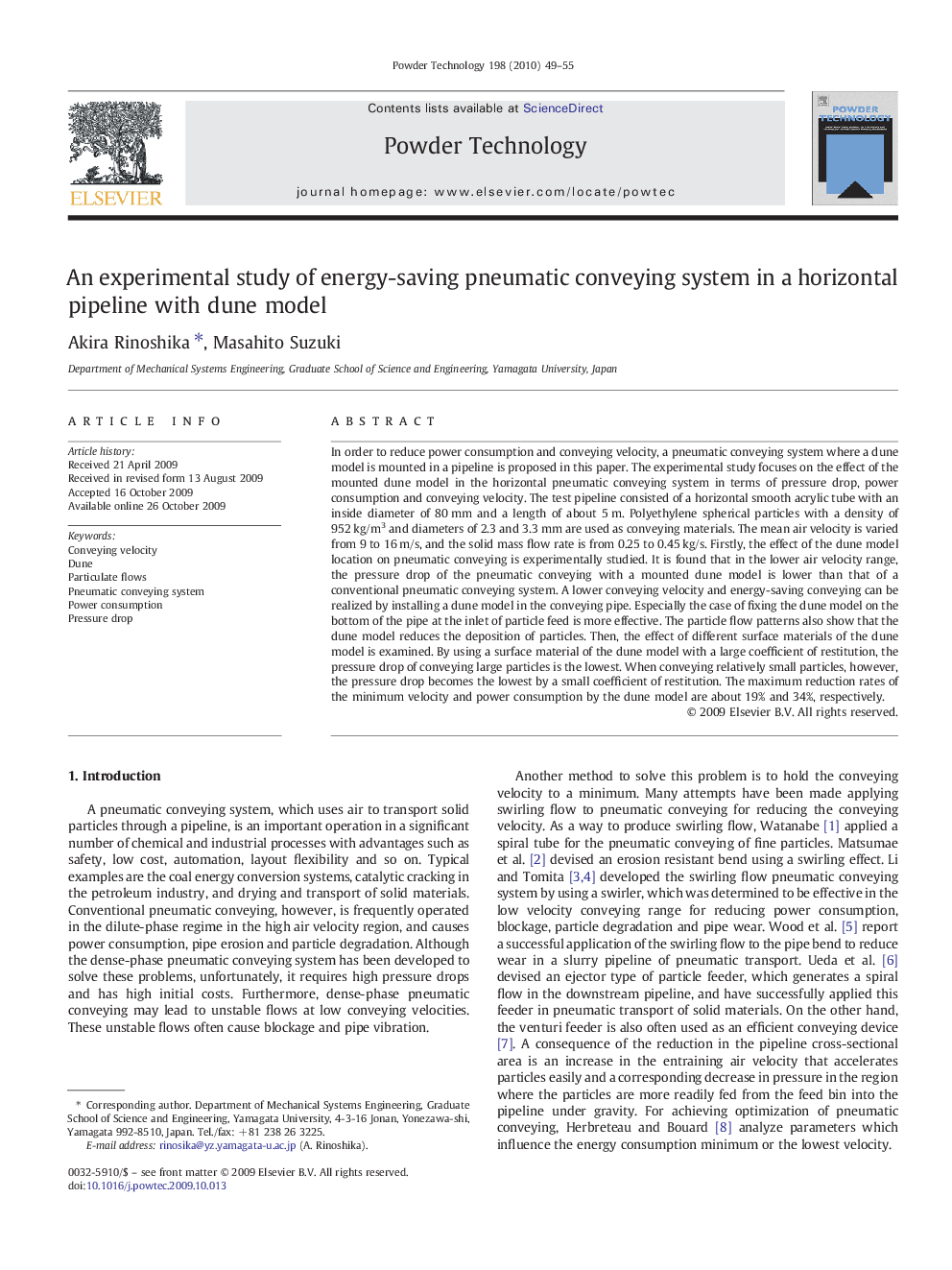| کد مقاله | کد نشریه | سال انتشار | مقاله انگلیسی | نسخه تمام متن |
|---|---|---|---|---|
| 238366 | 465754 | 2010 | 7 صفحه PDF | دانلود رایگان |

In order to reduce power consumption and conveying velocity, a pneumatic conveying system where a dune model is mounted in a pipeline is proposed in this paper. The experimental study focuses on the effect of the mounted dune model in the horizontal pneumatic conveying system in terms of pressure drop, power consumption and conveying velocity. The test pipeline consisted of a horizontal smooth acrylic tube with an inside diameter of 80 mm and a length of about 5 m. Polyethylene spherical particles with a density of 952 kg/m3 and diameters of 2.3 and 3.3 mm are used as conveying materials. The mean air velocity is varied from 9 to 16 m/s, and the solid mass flow rate is from 0.25 to 0.45 kg/s. Firstly, the effect of the dune model location on pneumatic conveying is experimentally studied. It is found that in the lower air velocity range, the pressure drop of the pneumatic conveying with a mounted dune model is lower than that of a conventional pneumatic conveying system. A lower conveying velocity and energy-saving conveying can be realized by installing a dune model in the conveying pipe. Especially the case of fixing the dune model on the bottom of the pipe at the inlet of particle feed is more effective. The particle flow patterns also show that the dune model reduces the deposition of particles. Then, the effect of different surface materials of the dune model is examined. By using a surface material of the dune model with a large coefficient of restitution, the pressure drop of conveying large particles is the lowest. When conveying relatively small particles, however, the pressure drop becomes the lowest by a small coefficient of restitution. The maximum reduction rates of the minimum velocity and power consumption by the dune model are about 19% and 34%, respectively.
To reduce power consumption and conveying velocity, a pneumatic conveying system where a dune model is mounted in a pipeline is proposed. The figure of the experimental result shows that lower conveying velocity, lower pressure drop, and therefore energy-saving conveying can be realized. The maximum reduction rates of the minimum velocity and power consumption are about 19% and 34%, respectively.Figure optionsDownload as PowerPoint slide
Journal: Powder Technology - Volume 198, Issue 1, 20 February 2010, Pages 49–55